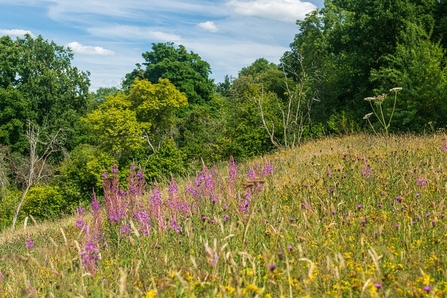Herefordshire Wildlife Trust is to extend one of its oldest Nature Reserves at Common Hill, Fownhope, purchasing and restoring an adjacent field of just over three acres. The purchase has been made possible thanks to generous donations from the public, the local community in particular, and from funds received through the Environment Agency from an Enforcement Undertaking.
The new land will double the size of the nature reserve and allow the Trust to create a fantastic flagship reserve within the Woolhope Dome. Common Hill is predominantly a limestone grassland site – the rarest type of grassland within Herefordshire. Wildflower-rich grassland such as this is today extremely rare with 97% lost since the 1930s – around 7.5 million acres – so every grassland site that can be restored and protected is extremely precious.
Common Hill Nature Reserve holds a rich array of wildflowers and numerous insect species. One key species is the wood white butterfly, recorded here annually as a small outlying population linked to the Haugh Wood colony. The wood white butterfly is a priority species for conservation, having declined drastically by nearly 90% in the last 40 years.
Herefordshire Wildlife Trust plan to improve the new area for wildlife, in particular by spreading wildflower seed harvested from parts of the existing reserve which are currently more diverse in wildflower and grass species. This should help to increase species such as orchids, yellowwort and woolly thistle.
Estates Manager James Hitchcock commented: “It is fantastic to be able to increase the size of this reserve within the wonderful landscape of the Woolhope Dome. We know that nature reserves are of greater benefit to wildlife the bigger they are and the closer they are to each other or to other wildlife-friendly habitats, so this new land is ideally placed to have a significant benefit for wildlife. Common Hill is a wonderful reserve and enjoyed and cared for by many people: the local community, our staff, the site’s volunteer warden and our work party volunteers. It is great that we can continue to develop and improve the site, with their support, for wildlife and for visitors.”

